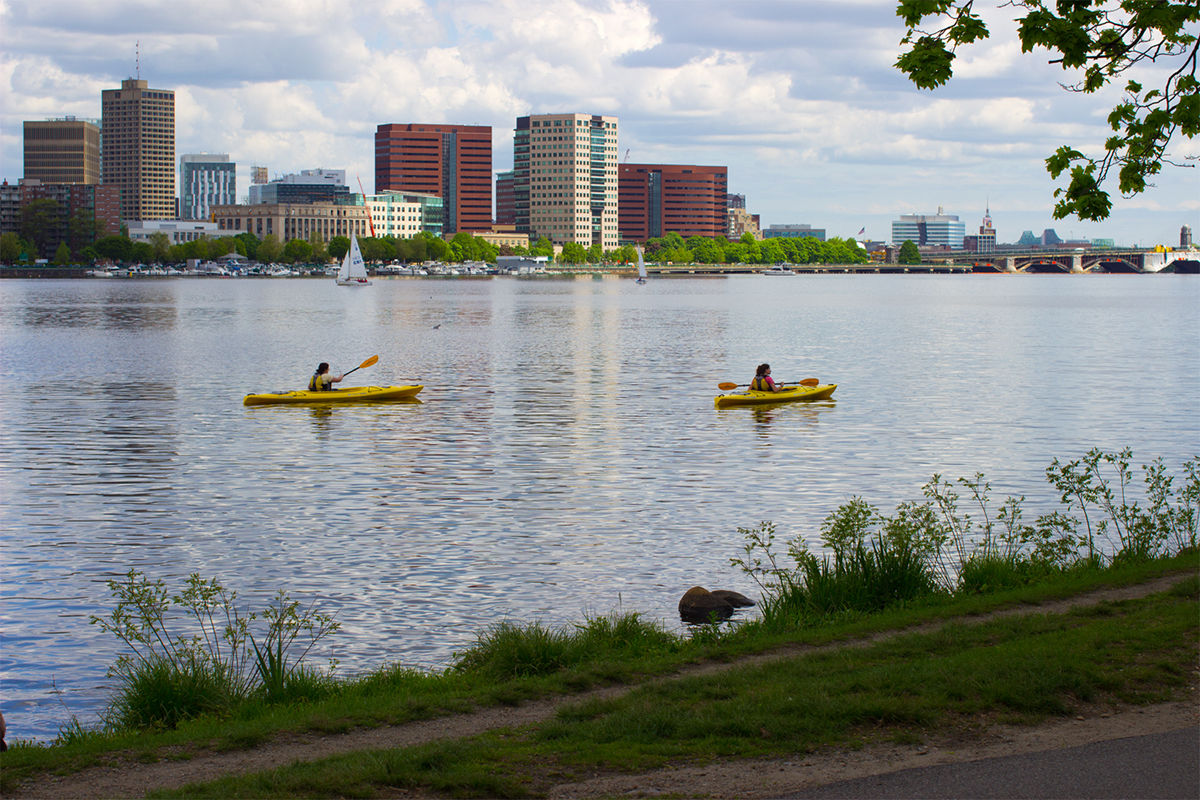The Charles River Is Clean

Photo by lisa decotis
Last summer, when we reported that a public swim in the Charles River was about to take place for the first time in 50 years, people balked. Of course, they had good reasons: a sordid past, murky-looking water, and the “sewage runoff” signs dotting the Esplanade running path. However, this week, the EPA gave the Charles a cleanliness grade higher than your last midterm.
The agency announced Wednesday that it has given the Charles a grade of “A-” for water quality during 2013. The EPA notes that it is the highest grade it has issued to the river since the Clean Charles River Initiative began in 1995. As with past years, the agency reports, the grade is based on “bacterial sampling conducted by the Charles River Watershed Association during the previous year.”
According to the report by the EPA:
The latest grade reflects continued improvement in the number of days the river is safe for boating and swimming. For the 2013 calendar year, the river was safe for boating 96 percent of the time and safe for swimming 70 percent of the time, representing the highest safe swimming percentage in the past 19 years since the Charles grade was first issued. This is a notable improvement over the past several years and a dramatic boost from 1995 when the River met boating standards only 39 percent of the time and was safe for swimming just 19 percent of the time. During recent years, groups such as the Charles River Conservancy and the Charles River Swimming Club have been hosting public swim events along the Charles River, a testament to the river’s improving conditions.
“Here’s what a clean Charles River means: it’s as simple as seeing how many people get out and enjoy swimming, kayaking, sailing and windsurfing on a nice summer day, and not having to worry about whether the water might make them sick,” said Curt Spalding, regional administrator of EPA’s New England office, in a statement. “We are extremely proud and gratified that our years of hard work to clean up the Charles River is showing positive results. This accomplishment would not have been possible without long-term and consistent efforts by our committed partners, working together to eliminate the dumping of sewage to tributary streams and stormwater outfalls discharging into the Charles River.”
The EPA also reported that it began a partnership with the Museum of Science (MOS). It placed a buoy in the Charles right outside the MOS to monitor water quality. The data, according to the EPA, will be displayed at the museum’s forthcoming Charles River exhibit. “EPA is working to provide current Charles River water quality information publicly on the Web for the 2015 boating and swimming season,” the report says.
Spalding says that the credit should go to the Massachusetts Water Resources Authority (MWRA), which was working under a Federal Court-ordered Long Term Control Plan. “The MWRA funded a $26.7 million effort that Brookline completed last year, separating part of that Town’s storm drain system from its sewer system,” he says. “The Boston Water and Sewer Commission completed a similar project, also funded by MWRA, over the last several years in the Bullfinch Triangle, an area running from North Station to Government Center. These public investments are paying long term dividends.”
We love that (no so) dirty water.


